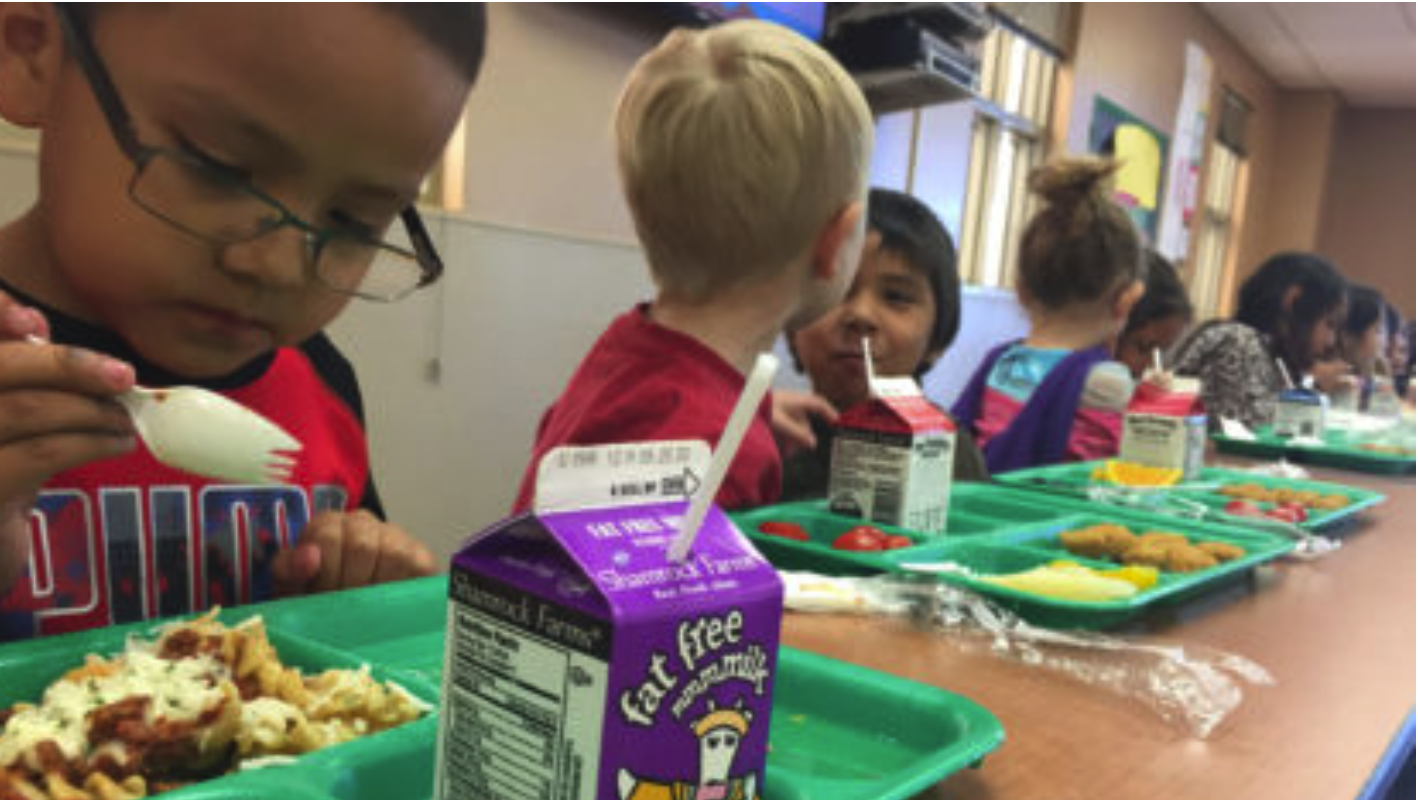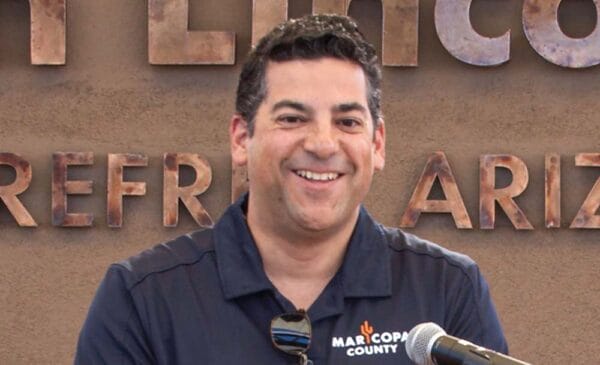Sep 6, 2022, 4:05 AM
Students at Barbara Robey Elementary School District in Litchfield eating during their lunch hour. Litchfield offers full salad and fruit bars. || Photo by Lily Altavena/Cronkite News)
BY HALEY SMILOW | CRONKITE NEWS
To see the real-world impact of inflation, you can look to the reams of data provided by the Bureau of Labor Statistics.
Or you can talk to Shannon Gleave.
“Last year, for 152 slices of bread we paid about $3.80,” said Gleave, the director of food and nutrition services at Glendale Elementary School District. “This year the cost is right at $6.90 for the same amount.”
It’s a situation being faced by school districts across the state, where officials are scrambling to figure out how to afford meals for students at a time when inflation nationwide is running at the highest level in decades.
RELATED STORIES
- Arizona teachers can apply for up to $600 to spend in classroom, but funds are going fast
- Where are the teachers? A look at Arizona’s struggle to fill positions
- Arizona school district moves to 4-day weeks to boost teacher recruitment, retention
The latest numbers from the BLS show that overall food costs rose 10.9% nationwide from July 2021 to July 2022. Prices were up across the board, including in the staples of the school cafeteria: Milk rose 15.6%, fresh fruits were up 9%, bread was 13.7% higher and the cost of eggs increased 38%.
Even the rising cost of food storage is putting the pinch on school districts. Lindsay Aguilar, the Tucson Unified School District ‘s director of food services, said those have been some of the steepest increases, with containers for storing salads and vegetables going up 116-135% over the last year.
“We are seeing anywhere from a five to 200% price increase compared to last school year for many of the products that we purchase,” Aguilar said.
The rising prices have put school districts in a difficult spot: They can raise prices for the families they serve, or find a way to lower costs.
Already, Aguilar said her district has had to raise prices by 20 cents per meal, boosting the full price for lunch to $2.50 for kindergarten through fifth-grade students and $3 for sixth- through 12th-graders. It’s the first time the district has raised prices since 2019, when pandemic relief programs helped subsidize school meals.
Prices are set by each school district. A review of district web sites this week showed prices ranging from $3.90 for a lunch for Gilbert high schoolers to the Nogales Unified School District, where students are still being provided free meals.
The cost of school meals had not been a concern for the past two years because of COVID-19 relief measures that waived the application for the free and reduced-price meal program in schools. That meant that any public school student was eligible for a free meal as long at the waivers lasted.
The waivers lasted until this summer.
Schoolchildren can still get a free or reduced-price meal depending on their family’s income. But they have to apply and prove they meet the income thresholds: Children whose families make up to 130% of the federal poverty level qualify for free meals, while those making up to 185% can get a meal at a reduced cost of 30 cents for breakfast and 40 cents per lunch.
But school officials worry that the application process, after two years without one, could be a challenge for families. And they note that, in many cases, families exceeding the income levels must pay in full for meals.
“We are doing everything that we can to make sure that parents are not affected at the schools,” Gleave said. “They are experiencing the rising inflation costs at home, so we work diligently to make sure that we are doing what we can to make sure that these meals are still accessible to all students at a reasonable price.”
Educators said a good meal is critical to child’s learning and development.
“For a lot of students, the two meals that they can really rely on each day are breakfast and lunch at school,” said Beth Lewis, the executive director of Save our Schools Arizona.
“Students learn better when they are fed. We all take in information differently when we aren’t worrying about where out next meal is coming from,” said Lewis, a former teacher.
The situation may seem complex, but to advocates like Lewis the solution is simple.
“You actually can throw money at the problem,” Lewis said.
“Like you can throw money at kids and feed them and get them supplies for their classrooms. You can throw money at teachers and keep them in the classrooms,” Lewis said. “The age-old adage of not being able to throw money at the problem is harmful to our kids.”












